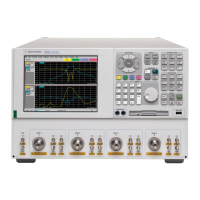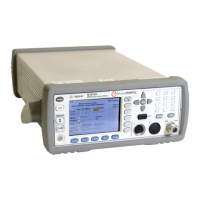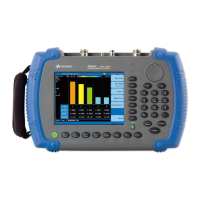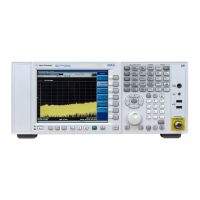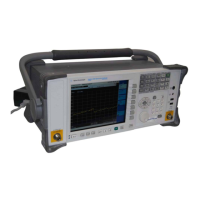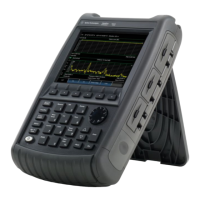Service Guide N5230-90024 5-9
PNA Series Microwave Network Analyzers Theory of Operation
N5230C Synthesized Source Group Operation
Frequency Offset Operation (Option 080)
Since the A7 and A9 fractional-N synthesizer boards each contain their own phase lock circuitry, they can be
phase locked independently to different output frequencies. Normally the LO signal is automatically tuned to
a frequency 250 kHz higher than that of the test signal to create the 250 kHz difference frequency (IF) in the
A20 mixer brick.
In frequency offset mode (Option 080), the LO signal can be independently tuned to any frequency (within its
tuning range) to allow for frequency offset measurements needed when testing devices such as mixers and
converters.
A7 and A9 Fractional-N Synthesizer Boards
The A7 and A9 fractional-N synthesizer boards use the 5 MHz reference signal from the A10 frequency
reference board to tune two VCO circuits: one that sweeps from 1500 to 3010 MHz and one that is set to a
CW frequency of 2250 MHz.
In bands 1 and 2, these signals are mixed to produce the output frequencies listed in Ta b l e 5 - 2 . In band 3, the
output of the swept VCO is passed through a divide-by-2 circuit to produce the output frequencies listed in
Ta b l e 5 - 2 . In all other bands, the swept VCO signal is sent directly to the synthesizer output.
At the output, an ALC circuit maintains the power level at -5 dBm ± 2 dB for bands 1–2 or 5 dBm ± 1.5 dB
for bands 3–30. In all bands, the output is sent to either the A6 or A8 multiplier board.
The output of the A7 fractional-N synthesizer board is 250 kHz higher than the output of the A9 fractional-N
synthesizer board. This is because the output of the A7 fractional-N synthesizer board is routed through the
A6 multiplier board to the A20 mixer brick where it is mixed with the test signal to produce a 250 kHz IF
signal for each of four channels. Refer to “A20 Mixer Brick” on page 5-19 for a more complete description.
A6 and A8 Multiplier Boards
In bands 1-4, the input signal from the A7 or A9 fractional-N synthesizer board is passed through the
multiplier board unchanged. For all other bands, the signals are doubled, filtered, and amplified. In the A6
board, in bands 8-10, 16-21, and 23-30, the signals are again doubled, filtered, and amplified. Together these
signals create the full output frequency range of 10 MHz to 10.0 GHz for the A6 board or 10 MHz to 6.25 GHz
for the A8 board.
A17 Multiplier/Amplifier/Switch/Splitter 26.5 (MASS 26.5)
The A17 MASS 26.5 is used only in analyzers with a high-end frequency of 22.5 GHz or lower. For the 20 GHz
analyzer, the A17 board utilizes only bands 1-17.
In bands 1–7, the 10 MHz to 6.25 GHz inputs are filtered, amplified, and passed through the A17 MASS 26.5.
In bands 8–17, they are doubled, filtered, and amplified. In bands 13-17, they are doubled, filtered, and
amplified again.
Together, these signal paths create the full output frequency range of 10 MHz to 22.5 GHz that is sent to the
splitter and then to the front panel test ports. Refer to “Signal Separation Group Operation” on page 5-15.
A18 Multiplier/Amplifier 26.5 (MA 26.5)
In bands 1–7, the 10 MHz to 6.25 GHz inputs are filtered, amplified, and passed through the A18 MA 26.5. In
bands 8–30, they are doubled, filtered, and amplified. In bands 13-17 and 19-30, they are doubled, filtered,
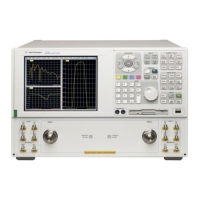
